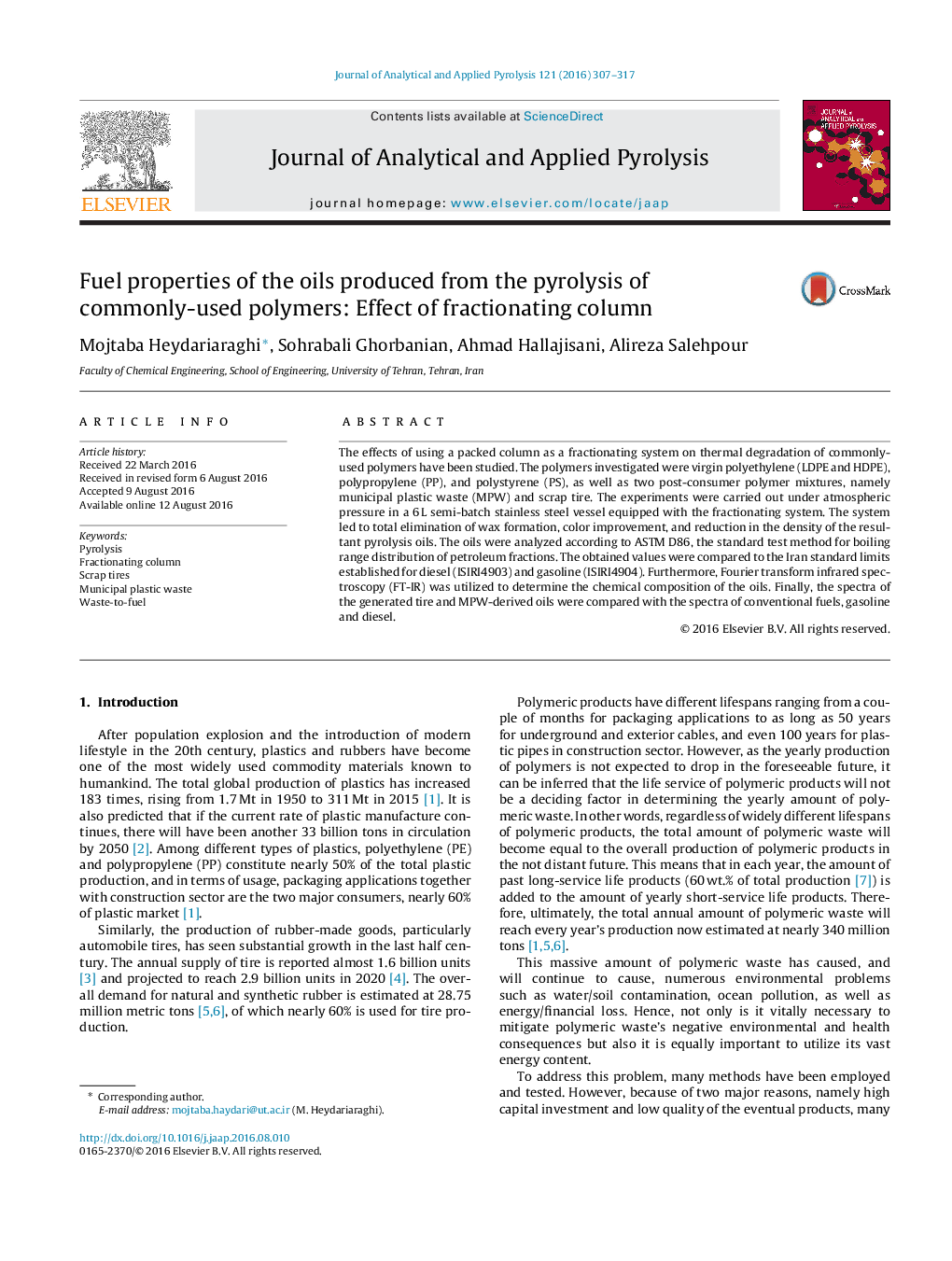| Article ID | Journal | Published Year | Pages | File Type |
|---|---|---|---|---|
| 5134732 | Journal of Analytical and Applied Pyrolysis | 2016 | 11 Pages |
â¢Elimination of the wax produced from the pyrolysis of commonly used plastics.â¢Production of Lighter pyrolysis oils with brighter colors.â¢Highly efficient de-polymerization of Polystyrene.â¢Strong similarities between the plastic-derived oils and diesel.â¢Strong contrasts between the tire-derived oil and the plastic-derived oils.
The effects of using a packed column as a fractionating system on thermal degradation of commonly-used polymers have been studied. The polymers investigated were virgin polyethylene (LDPE and HDPE), polypropylene (PP), and polystyrene (PS), as well as two post-consumer polymer mixtures, namely municipal plastic waste (MPW) and scrap tire. The experiments were carried out under atmospheric pressure in a 6Â L semi-batch stainless steel vessel equipped with the fractionating system. The system led to total elimination of wax formation, color improvement, and reduction in the density of the resultant pyrolysis oils. The oils were analyzed according to ASTM D86, the standard test method for boiling range distribution of petroleum fractions. The obtained values were compared to the Iran standard limits established for diesel (ISIRI4903) and gasoline (ISIRI4904). Furthermore, Fourier transform infrared spectroscopy (FT-IR) was utilized to determine the chemical composition of the oils. Finally, the spectra of the generated tire and MPW-derived oils were compared with the spectra of conventional fuels, gasoline and diesel.
